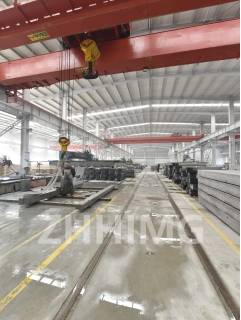Precision granite is a type of granite that has been carefully selected, machined, polished, and calibrated to precise measurements. It has a wide range of applications, including use in the precision positioning of optical waveguide devices. One of the key advantages of precision granite in this context is its superior stability and durability, which enables it to maintain its form and precision over time. In this article, we will explore the advantages of precision granite for optical waveguide positioning devices in more detail.
1. High Precision
The primary advantage of precision granite for optical waveguide positioning devices is its high precision. The surface of the granite is extremely flat and smooth, and it has been calibrated to within microns – or even nanometers – of accuracy. This level of precision is essential in the manufacturing and alignment of optical waveguides, which require exacting tolerances in order to function effectively. Granite provides an ideal platform for the positioning of these devices with a high degree of accuracy, ensuring that they function as intended.
2. Stability
The stability of precision granite is another important advantage that makes it an ideal material for optical waveguide positioning devices. Because it is a dense and homogenous material, it is less prone to the warping or distortion that can occur with other materials such as plastic or aluminum. Granite has a low coefficient of thermal expansion, meaning it is less likely to expand or contract in response to changes in temperature. This means that it can maintain its shape and size with a high degree of accuracy over time, ensuring that optical waveguides mounted onto it will remain in place without shifting or losing alignment.
3. Durability
Another significant advantage of precision granite for optical waveguide positioning devices is its durability. Granite is a hard and dense material that is resistant to wear and damage. It can withstand high temperatures and exposure to harsh chemicals without degrading or breaking down. This means that the surface of the granite can be repeatedly cleaned and polished without losing its precision or becoming damaged. As a result, it offers a long-lasting and reliable platform for the positioning of optical waveguides.
4. Low Vibration
Finally, precision granite has an advantage in that it has a low vibration profile. This means that it is less susceptible to external vibrations that could disrupt the precision alignment of optical waveguides. Environmental vibrations from nearby machinery or even human activity can cause tiny variations in the position of mounted devices. However, because granite has a high mass and rigidity, it can absorb and dampen these vibrations, reducing their impact on the position of optical waveguides. This ensures that the waveguides remain precisely aligned, even in environments with high levels of vibration.
In conclusion, precision granite is an outstanding material for the positioning of optical waveguide devices. Its high precision, stability, durability, and low vibration profile make it the best choice for mounting these sensitive and precise devices. With the use of precision granite, manufacturers and researchers can ensure the reliable and accurate positioning of optical waveguides, enabling a wide range of optical technologies to function at the highest level of performance.
Post time: Dec-01-2023

